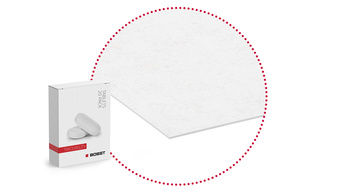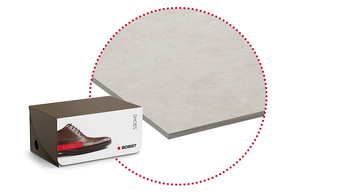Processed materials
It is over fifty years since BOBST first began producing equipment for the conversion of corrugated board. Having pioneered the automatic flat bed die-cutter for corrugated materials with the SPO 1575, in 1970 BOBST combined this technology with flexographic printing to create the SPO-FLEXO, a machine capable of flexo printing and flat bed die-cutting inline.
At the leading edge of both technologies ever since, BOBST equipment today sets the standard for what can be achieved with the inline process. We have achieved this by paying constant attention to the views of our customers, continuously investing in research and development programs, and by working with the leading players in specialist fields.
BOBST equipment for flexo printing and flat bed die-cutting inline covers a wide range of needs - from straightforward block printing and punching, to high quality process printing with complex die-cutting and stripping. Reflecting this range, our equipment is relied upon by a huge assortment of customers, from entry level users to experts, and from small businesses to multi-national corporations.
Carton board
Carton board (also called cardboard, paperboard or solid board) is the name for a range of paper based materials that includes folding box board (FBB, GC or UC), solid bleached board (SBB, SBS, or GZ), solid unbleached board (SUB or SUS), white lined chipboards (WLC, GD, GT, or UD), some unlined chipboards, and certain laminated boards.
To manufacture carton board, fibrous material, either from trees, recycled paper, or a mixture of the two, is turned into pulp. It is then bleached and processed in a board making machine to create a board consisting of one or more layers, which may optionally be coated to provide a better surface and/or improved visual appearance.
The crossover point between paper and board is normally considered to be around 160 grams per square meter (gsm), as it is only at this level that a fibrous material is likely to be stiff and rigid enough to make a container.
Cartonboard is primarily used in the packaging industry to produce all types of folding cartons, but may also be used for graphics applications. For folding cartons the board used will normally be in the range 200 to 600gsm, or 350 to 800 microns.

Corrugated board
Corrugated board is manufactured by combining lining paper with a fluting medium in a unit called a single facer. The liners used may be made from recycled, test, or kraft papers, and will consequently have a brown or white surface, which may be coated or semi-coated, depending on the application they are to be used for. Fluting medium is generally recycled paper.
In the single facer unit, heat, steam, and a corrugating roller are used to corrugate the fluting medium, which then has the liner attached. This creates single face, the basic building block of all corrugated board. Single face is used 'as is' for some specific applications such as litho-lamination, but is normally combined with further liners and fluting media to produce single wall corrugated (single face plus a top liner), double wall (single wall plus single face), or multi-wall (further combinations of the above).
The thickness of the corrugated material will depend on the fluting height created by the single facer and the combination of flutings used. The range of thicknesses can vary from 0,5 mm for the finest, up to 15 mm for the thickest, and sometimes more. The most commonly used grammages are in the range from 80 gsm to 300 gsm, however for some specific applications lighter or heavier papers may be used.

Heavy solid board
Heavy solid board is a type of carton board with a high basis weight.
To manufacture heavy solid board, fibrous material, either from trees, recycled paper, or a mixture of the two, is turned into pulp. It is then bleached and processed in a board making machine to create a board consisting of one or more layers, which may optionally be coated to provide a better surface and/or improved visual appearance. The resulting board will normally be heavier than 1000 grams per square meter (gsm).
Heavy solid board is primarily used in the packaging industry for applications where a high level of mechanical strength is required, such as trays for meat products or puzzle.
